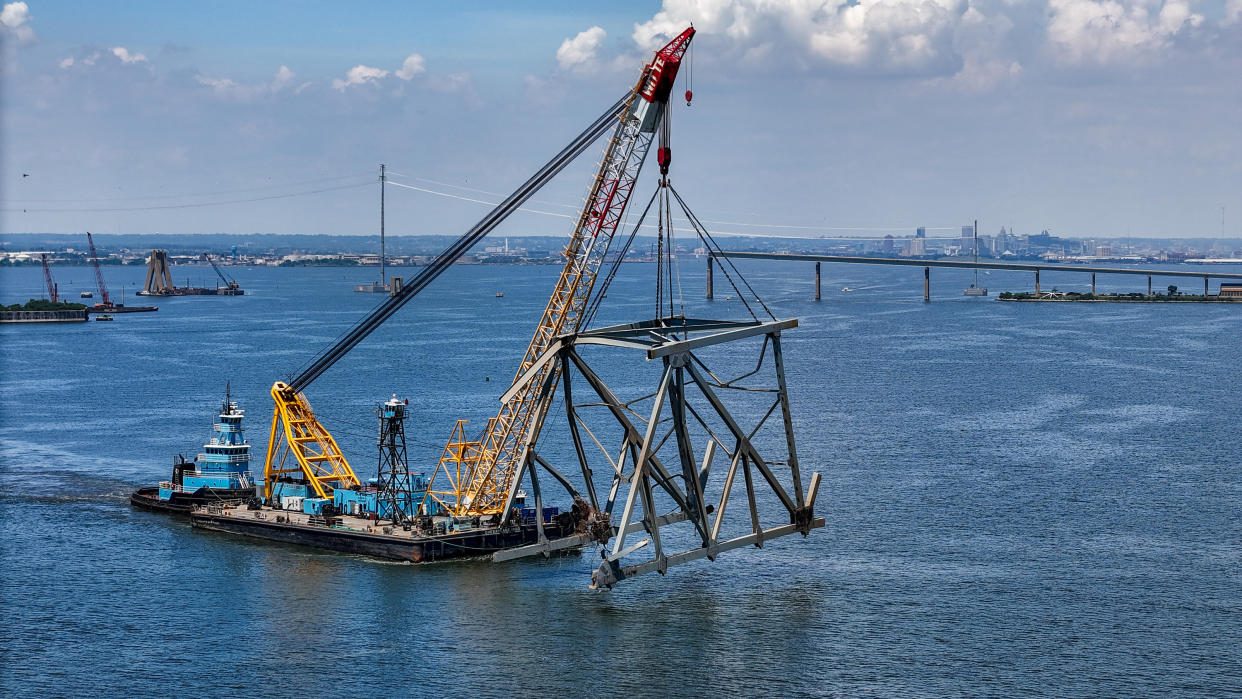Third, final large segment of Baltimore’s Key Bridge lifted out of water Tuesday morning

Crews lifted the last large piece of the Francis Scott Key Bridge blocking the Patapsco River’s main shipping channel Tuesday morning, according to the Army Corps of Engineers.
The lift, which Army Corps spokesperson Cynthia Mitchell said followed “extensive operations” to free the section of steel from the mudline, marked the end of operations to cut and haul out a large section of the Key Bridge that had fallen onto the Dali freighter and the surrounding riverbed in late March after the massive ship struck a bridge support column.
Key Bridge Response Unified Command crews are now set to use dredging buckets and a large salvage grab to pull smaller chunks of debris out of the water before reopening the full 700-foot-wide channel in and out of the Port of Baltimore. The full marine route is expected to open sometime between Saturday and Monday after surveys to ensure no debris remains in the federal channel.
Opening the main channel will mark a return to normalcy for maritime traffic into the port, which was significantly hampered when the bridge collapsed into the federal channel March 26, killing six construction workers.
A 400-foot-wide section of the main channel has allowed 24/7 cargo vessel access into the Baltimore harbor for about two weeks, opening after crews refloated the Dali.
Over the past several weeks, Unified Command crews have been cutting a 10-million-pound bridge segment into large pieces and lifting them out of the river using the Chesapeake 1000 crane. The large piece of steel truss, dubbed “Section 4,” is the same segment of bridge that had pinned down the Dali for 55 days.
The first segment, which weighed in at 140 tons, was lifted on May 24 and taken to Sparrows Point for processing. A second, 470-ton segment was lifted over the weekend, and the third and final — estimated to weigh around 400 tons — was picked up and transported Tuesday morning.
The final lift required approximately 200 tons of steel to be removed through smaller cuts, shaking and hammering in order to remove the larger piece from the water, Mitchell said.

